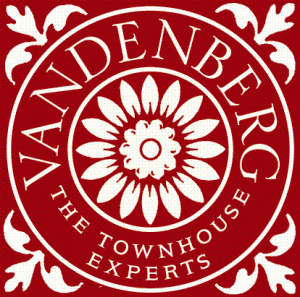By Dexter Guerrieri, President, Vandenberg – The Townhouse Experts™
How do you analyze the value of a townhouse? With townhouses, value goes beyond the analysis of location and condition. One must consider the number of apartments in the building, whether they are deregulated, and how many of them can be delivered vacant.
Location, Location, Location
New York City values are analyzed neighborhood by neighborhood and block by block. On the Upper West Side, blocks adjacent to Central Park in the 60’s and 70’s are the most valuable, with proximity to Central Park adding value. Next would be those near Riverside Park in the 70’s and 80’s. Next come Central Park blocks in the 80’s and 90’s, followed by those on nonpark streets with the 60’s and 70’s being most valuable. Values descend as you go up into the 90’s and 100’s.
The configuration of each block affects value, with rows of facing townhouses being the most desirable. The uniformity of the block matters too. Townhouses were built in rows of four, six, or eight. If the rows are interrupted by large apartment buildings, the appeal is diminished. Houses on either side of yours have an impact: are they single-family homes or do they have a fire escape on the front? Blocks with a fire or police station or a school are considered less desirable.
Comparing Apples to Apples
Although townhouses were built as single-family homes, many now have multiple dwelling units. There are essentially three categories: Most valuable are the single to three-family townhouses, in premium locations, delivered vacant or with high-rent deregulated tenants who will easily vacate.
Next are those that have an owner’s unit of one to three floors, typically the garden and parlor floors, plus income from combinations of deregulated, rent-stabilized, and rent-controlled units.
Townhouses filled with rent-stabilized and rent-controlled units, with less than a whole floor delivered vacant, are the least valuable. Investors may buy these buildings based on the return they can get on their money and make offers in the range of 10 to 14 times the rent roll.
Condition, Configuration, and Size
Since it can cost $3,000,000 to renovate or restore an entire townhouse, condition is crucial. Also, square footage can range widely. Some townhouses are as narrow as 13 feet and some mansions are 25 feet wide, with nearly twice the square footage. Layouts can be difficult, and new buyers often have trouble visualizing changes, which can lower sales price.
Dollars and Cents
The average West Side sale is around $6.8 million, approximately $1200 per square foot, but this is of little use when evaluating specific properties. The three highest townhouse sales on the West Side to date ranged between $19 to $23 million dollars, or $1,823 to $2,141 per square foot. These were one-family townhouses, facing Central Park or on 70s Central Park blocks. All were fully finished, with elevators, between 20 and 25 feet wide, and each had over 9,000 square feet of living space.
More typical are the $5 to $7 million sales on lesser blocks, with a two-or three-floor owner’s unit, plus rental income (from deregulated tenants). These are around $1,000 to $1,400 per square foot. The $3 to $5 million sales are usually investment properties with no vacancies or several rent controlled apartments, for $500 to $700 per square foot.
Get Ready
Assemble your team of professionals. In addition to a real estate broker, you will need an accountant to have your financials in order: a lawyer who is knowledgeable about townhouse sales, a banker who has given you pre-approval so you know exactly how much you can afford to borrow, an engineer identified for inspection purposes, and a contractor or architect who can give you construction and restoration estimates on short notice.
